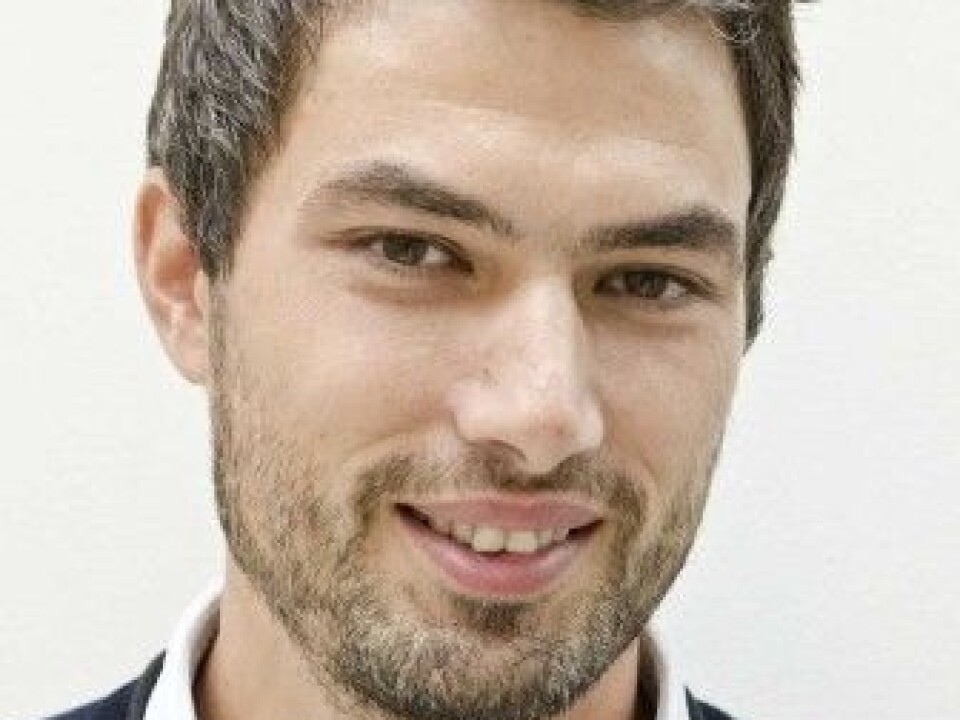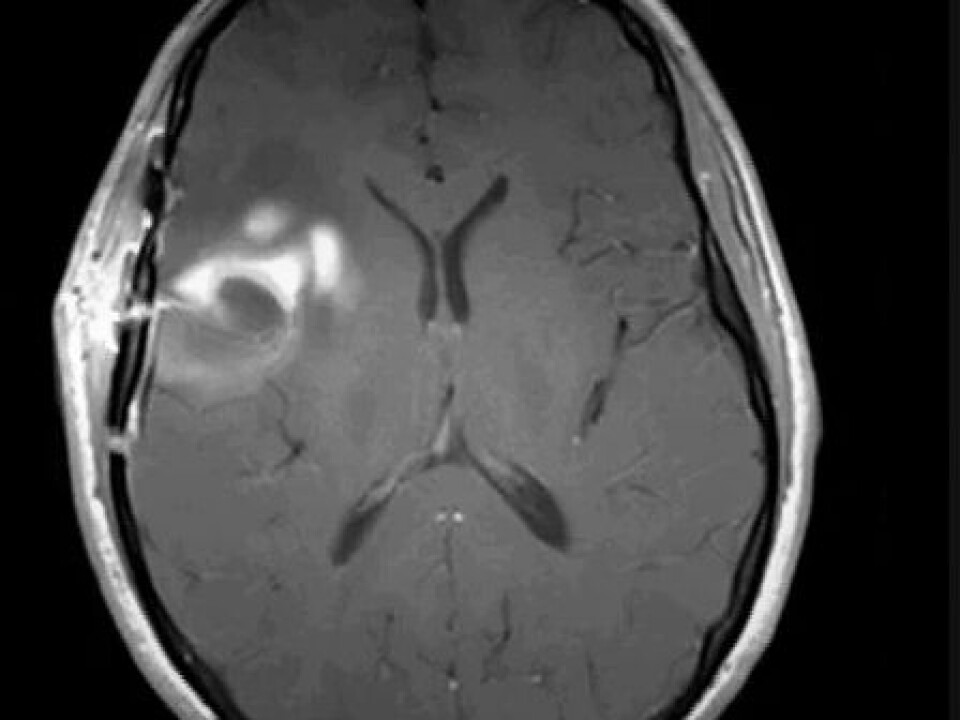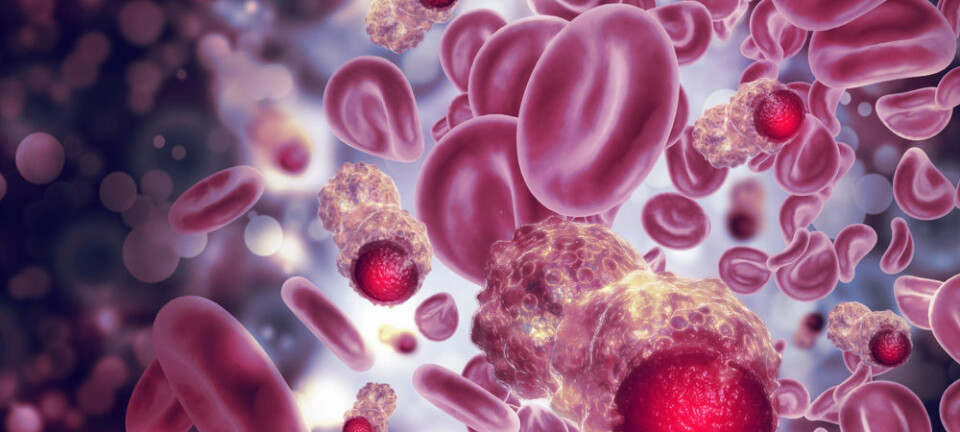
Brain Cancer: Vibrating the brain to find resistant tumours
The current treatment for brain cancer has almost no effect for some people with the disease. Norwegian researchers are now experimenting by using vibrations to find these patients.
Patients having identical brain cancer diagnoses may respond very differently to the treatment they receive. For some patients, the treatment has virtually no effect.
One reason is that patients with the same diagnosis may have tumours with very different consistencies. Surgeons have been able to see and identify those differences only once they’ve operated on the patient to remove the tumour.
Some patients have tumours that are soft as jelly, while others are hard as stone. Radiation and chemotherapy often can’t reach hard tumours. These patients are at risk for treatment that doesn’t work.
Identifying the consistency of the tumour before surgery and how this affects cancer treatment is difficult.
Sending vibrations to the head

Researchers at the University Hospital in Oslo (OUS) are now investigating why cancerous tumours with the same diagnosis behave so differently.
They are now starting to test out a method called elastography, which involves sending vibrations to the heads of people with brain cancer. The method is harmless for the patients.
The waves are created by placing a small instrument against the patient's skin, which feel almost like subwoofer vibrations.
At the same time, the patient is lying in an MRI scanner that takes pictures of the brain.
Finding the most resistant tumours

“We’re hoping to observe how the vibrations move as waves through the diseased tissue,” project manager Kyrre Eeg Emblem at the University Hospital in Oslo tells Science Nordic.
Norwegian researchers are collaborating with several others, including Sverre Holm at the University of Oslo and colleagues at Kings College London.
Measurements of the bloodstream in the cancerous tumour will supplement the elastography method.
The researchers hope to capture the stiffness of the tumour and how small blood vessels are compressed and reduce the effectiveness of the cancer treatment.

The goal is to obtain more information about how the cancerous tumour grows. The researchers hope that this knowledge will enable them to identify the patients with the most resistant tumours.
The elastography method is used today to measure disease in the liver. It hasn’t been widely used in brain or cancer treatment.
Tissue softening medications
The study will include approximately 200 adult patients, who will be recruited through the oncologists at OUS.
If the imaging technique turns out to be successful, the next step is to prescribe medication to the patients who have hard tumours.
The hope is that the medicine will soften the tumour tissue. This softening is a fortunate side effect of the medicine, which is used primarily to treat other diseases.
"Our hope is that the connective tissue will then become more responsive to ordinary cancer treatments like radiation and chemotherapy," says Emblem.
Tissue samples don’t reveal tumour shape
Currently, all patients receive a diagnosis and the same treatment based on a biopsy and their MRI.
“A classical biopsy taken from a tissue sample doesn’t capture differences in tissue stiffness or shape. The samples are taken from a particular area, so they don’t give a complete picture of the surrounding environment,” says Emblem.
Doctors can’t see differences in the various tumour types from ordinary MR images either.
See also animated gif of hard, or solid stress, cancerous tumour.
Like a kink in a water hose
The uncontrolled growth of some cancerous tumours is believed to make the connective tissue around the cancer cells stiff and hard.
“It’s sort of like a kink in a garden hose. The cancerous tumours compress the small blood vessels and thus reduce the oxygen supply,” says Emblem.
“The low oxygen level also makes the area is less receptive to the medication. The tissue doesn’t absorb it,” he says.
The researchers have described this phenomenon in an article in the journal Nature Biomedical Engineering.
The result is an aggressive cancerous tumour that responds poorly to almost all the currently available therapies, such as chemotherapy and radiation.
See also animated gif of soft, or infiltrating, cancerous tumour.
Pre-treatment can increase effectiveness
The researchers hope they’ll be able to identify patients with the type of cancerous tissue that responds poorly to regular cancer treatment.
“Then we can provide pre-treatment that softens the rigid connective tissue. The hope is that the tissue will become soft enough to dissolve the kinks in the blood vessels.
If these drugs also work on the cancerous tumour, the effectiveness of most other forms of cancer treatment, such as radiation, chemotherapy and immunotherapy, will increase.
Aggressive brain cancer
Cancer researchers usually distinguish between brain cancer that occurs in the brain and the spread (metastasis) to the brain of other cancerous tumours from the lungs, breast or mole cancer.
“The patients we want to investigate in this study have glioma-type brain cancer, specifically glioblastomas, and brain cancer metastases. These are very aggressive forms of cancer,” says Emblem.
And mortality is high.
“The outlook today for median survival varies between six months and two years,” says Emblem.
He is hoping to have initial results within a year.
----------
Read the Norwegian version of this article at forskning.no































